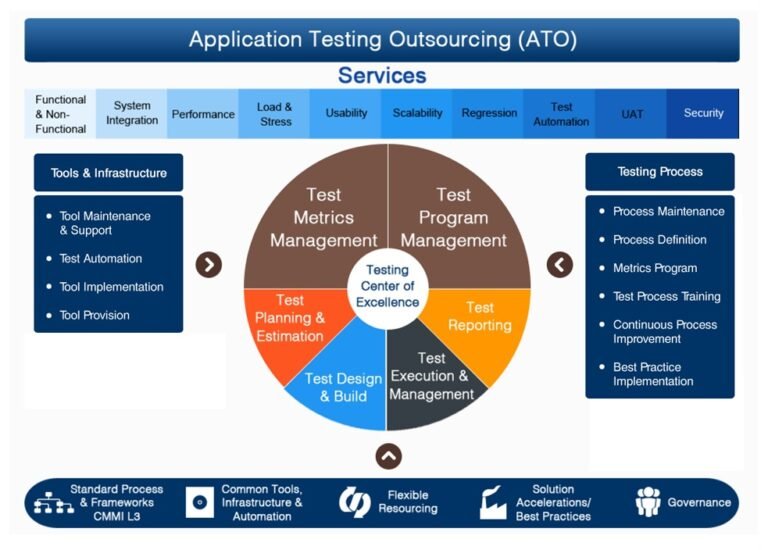Artificial intelligence has evolved rapidly over the past decade—from simple automation tools to complex reasoning systems capable of understanding human intent. Yet, as enterprises accelerate digital transformation, the next big leap isn’t just about smarter algorithms—it’s about intelligent autonomy. That’s where OpenAgent Multimodal Agentic AI steps in.
This technology represents the convergence of three revolutionary ideas: multimodal understanding, agentic autonomy, and enterprise-scale adaptability. Together, they form a new class of AI systems that not only process information across multiple data types but also think, reason, and act independently within organizational frameworks.
OpenAgent Multimodal Agentic AI is more than a tool—it’s an evolving intelligence layer that powers the next generation of digital enterprises.
Defining OpenAgent Multimodal Agentic AI
To understand what OpenAgent Multimodal Agentic AI is, it helps to break down its three core dimensions.
1. “OpenAgent” refers to an open, modular AI framework that allows agents to interact, learn, and collaborate autonomously. These agents can operate individually or collectively, integrating with enterprise systems like CRMs, ERPs, and cloud applications.
2. “Multimodal” means that the AI can interpret and reason across multiple forms of data—text, voice, images, video, structured records, and sensory data. Unlike traditional models that focus on one type of input, multimodal AI fuses various data streams into a single contextual understanding.
3. “Agentic AI” describes systems that not only comprehend information but can act upon it intelligently. These agents possess reasoning abilities, memory, and goal-oriented behaviors—similar to how human employees take initiative and execute tasks based on context.
When these three layers combine, OpenAgent becomes a cognitive ecosystem that allows organizations to automate complex processes, generate insights, and make decisions in real time—all without constant human supervision.
Why Multimodal Matters: The Human-Like Understanding of Context
Traditional AI systems were designed to specialize—one model for text (like chatbots), another for images (like object detection), and another for voice (like speech recognition). While effective in isolation, these systems lack context when real-world data crosses modalities.
Imagine a customer support scenario: a client sends an email with a product photo and a voice note explaining an issue. A unimodal AI might understand the text but miss the visual clue or emotional tone. A multimodal agent, however, understands the text’s meaning, identifies the product in the image, and detects frustration in the voice—all simultaneously.
This is the power of multimodal intelligence: it mimics human perception by merging different types of information into a single, coherent understanding. For enterprises, this means more accurate insights, smarter automation, and seamless integration between human and machine intelligence.
OpenAgent’s multimodal foundation enables it to see, hear, read, and reason—transforming data from different sources into actionable knowledge that can drive business outcomes instantly.
Agentic Intelligence: The Next Evolution of AI
The second pillar of OpenAgent’s design is agentic AI—an AI paradigm that goes beyond passive analysis to autonomous reasoning and action.
In traditional systems, AI models wait for input, perform a task, and output results. In contrast, an agentic AI continuously monitors its environment, interprets changing conditions, and takes proactive action based on defined goals.
For example, in a financial institution, an OpenAgent AI might monitor real-time transaction data, detect anomalies, and autonomously execute fraud-prevention protocols. In a manufacturing context, it might analyze production line visuals, predict machine failures, and automatically adjust schedules or request maintenance before a breakdown occurs.
This capacity for autonomous decision-making turns AI from a reactive tool into a strategic collaborator. The system becomes capable of identifying not only “what is happening” but also “what should happen next.”
In other words, OpenAgent doesn’t just process data—it thinks.
The Architecture of OpenAgent Multimodal Agentic AI
At its core, OpenAgent Multimodal Agentic AI is built on a distributed, modular architecture that allows scalability and flexibility. Each agent operates as a semi-autonomous module with its own reasoning engine, multimodal understanding layer, and memory bank.
Agents can collaborate with one another—sharing context, insights, and goals—to handle large-scale enterprise challenges. For instance, one agent may focus on customer experience optimization, another on logistics, and a third on cybersecurity. Together, they operate under a unified orchestration system, ensuring alignment with organizational objectives.
The OpenAgent platform integrates seamlessly with existing enterprise technologies, including APIs, data lakes, IoT devices, and cloud infrastructures. This ensures that the system doesn’t replace current investments—it enhances them by adding intelligence, adaptability, and autonomy.
The result is a self-evolving ecosystem where AI agents learn continuously from real-world interactions, refining their understanding and optimizing performance over time.
From Automation to Autonomy
For years, enterprises have relied on automation to handle repetitive and rule-based tasks. However, automation is limited—it can only follow predefined instructions. The world, on the other hand, is dynamic. Business conditions, market trends, and customer behaviors change constantly.
OpenAgent shifts the paradigm from automation to autonomy. Instead of waiting for instructions, its agentic framework enables systems to analyze situations, make informed decisions, and execute actions without manual input.
For example, in logistics, OpenAgent can autonomously coordinate fleet operations based on weather data, customer orders, and traffic conditions—making adjustments on the fly. In finance, it can manage portfolio allocations based on real-time risk indicators.
This autonomous capability allows businesses to respond faster, reduce operational friction, and minimize human error while still maintaining control and oversight through explainable AI mechanisms.
Turning Data Into Strategic Value
Every organization collects massive volumes of data—but data alone doesn’t create competitive advantage. The true value lies in converting it into insight and action.
OpenAgent’s multimodal design gives enterprises the ability to extract meaning from every kind of data. Whether it’s visual analytics, natural language understanding, or numerical processing, the system integrates diverse inputs into a unified perspective.
Take retail, for instance. OpenAgent can analyze customer sentiment from reviews, detect visual shelf gaps from camera feeds, correlate that with sales data, and automatically suggest inventory adjustments. In healthcare, it can combine medical imaging with clinical notes and patient speech data to enhance diagnostics and care recommendations.
This contextual intelligence ensures that enterprises don’t just see data—they understand it in real time and use it to make proactive, value-driven decisions.
Why OpenAgent Matters for Modern Enterprises
In a competitive landscape defined by speed, intelligence, and adaptability, OpenAgent offers something traditional AI systems cannot: continuous learning and dynamic decision-making.
Businesses that adopt OpenAgent gain:
-
A unified cognitive layer connecting all data sources and business systems.
-
Real-time, multimodal understanding of operations, markets, and customers.
-
Autonomous agents capable of making decisions aligned with company goals.
-
Scalable, explainable AI systems that evolve with organizational needs.
This leads to reduced latency in decision-making, improved operational efficiency, and enhanced customer experiences—all while maintaining transparency and control.
More importantly, OpenAgent fosters a new relationship between humans and AI. It’s not a replacement for human intelligence but an augmentation of it—amplifying creativity, precision, and productivity across the enterprise.
Human-AI Collaboration: The New Workflow Standard
In most enterprises, AI still functions as a background service—an assistant that executes commands. OpenAgent redefines this relationship by enabling collaborative intelligence, where AI agents and human teams operate as partners.
When OpenAgent identifies a pattern or opportunity, it doesn’t just act—it explains. It can present its reasoning, data sources, and confidence levels, allowing human decision-makers to review, approve, or refine actions.
This transparency fosters trust and accountability while enabling teams to focus on high-value, strategic work. AI handles the complexity, humans provide the creativity, and the result is a synergy that drives innovation at scale.
Explainability and Ethical AI
One of the most critical aspects of modern AI adoption is trust. Enterprises must ensure that AI decisions are fair, explainable, and compliant with regulations. OpenAgent has built-in Explainable AI (XAI) capabilities that provide full visibility into decision-making processes.
Every action taken by an OpenAgent—whether it’s an automated workflow, recommendation, or prediction—is accompanied by an interpretable rationale. This means businesses can trace back the reasoning path, verify data sources, and ensure that every outcome aligns with ethical standards and corporate policies.
This transparency not only builds confidence but also supports compliance with frameworks like GDPR, ISO AI Ethics Guidelines, and industry-specific regulations.
Scalability and Integration
OpenAgent is designed to integrate seamlessly into enterprise ecosystems, scaling across departments, regions, and data environments. Its modular architecture supports both cloud-based and hybrid deployments, ensuring flexibility across industries.
Whether an organization uses SAP for ERP, Salesforce for CRM, or AWS for data management, OpenAgent connects effortlessly through APIs, creating a cohesive layer of intelligence. As it scales, it learns—improving efficiency and adaptability across the entire organization.
This makes it not just a single AI product but a strategic infrastructure layer for the intelligent enterprise of the future.
The Strategic Impact of OpenAgent Multimodal Agentic AI
The introduction of OpenAgent into enterprise systems signals a paradigm shift. It bridges the gap between perception, understanding, and action—allowing businesses to become living, learning systems that respond to change in real time.
Instead of waiting for human analysis, decisions emerge organically from the interaction of intelligent agents. This fluid, decentralized intelligence enables organizations to operate with the same agility as startups, even at massive scale.
In essence, OpenAgent represents the next step in enterprise evolution: from digital transformation to intelligent transformation.
Conclusion
OpenAgent Multimodal Agentic AI isn’t just a new technology—it’s a reimagining of what AI can be in the enterprise. By combining multimodal understanding with agentic autonomy, it allows organizations to move from static automation to dynamic intelligence.
In an era defined by speed and complexity, OpenAgent helps enterprises make better decisions, act faster, and continuously learn from outcomes. It creates an environment where data is alive—constantly interpreted, acted upon, and improved through collaboration between humans and intelligent agents.





